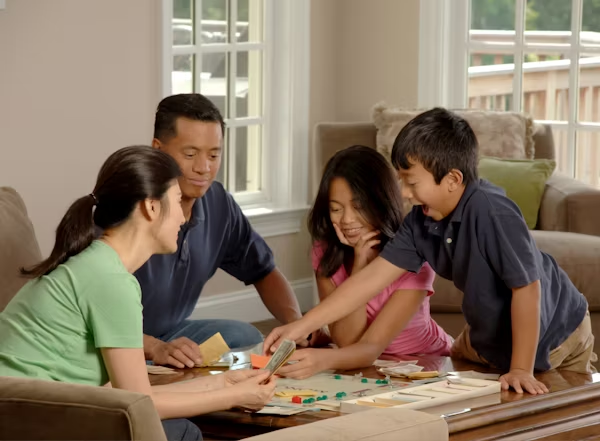
Mastering Screen Time Parenting in 2025
Ever caught your kid glued to a tablet, ignoring the world? I’ve been there, stressing when my daughter wouldn’t budge from her favorite game. Screen time parenting is about finding balance, not banning devices. This 2025 guide shares eight practical tips to manage kids and devices, set tech boundaries, and promote digital wellness for children. Ready to tame the screen beast? Let’s dive in!
Feeling overwhelmed? Check out our guide on avoiding parental burnout.
Why Screen Time Parenting Matters
Screens are everywhere—tablets, phones, TVs—and they’re not going away. My son once spent hours on YouTube, leaving me worried about his focus and sleep. Screen time parenting helps kids use tech without losing real-world connections. A Psychology Today study shows excessive screen time can increase anxiety and attention issues in kids. Setting tech boundaries boosts mental health, creativity, and family bonding, ensuring digital wellness for children. Balanced screen use also helps kids develop focus and emotional resilience, key for thriving in a digital world.
1. Understand Your Child’s Screen Use
Not all screen time is created equal. I learned my daughter’s coding app was way more productive than endless cartoons. Knowing what your kid does online lets you guide them better. Verywell Mind suggests observing kids and devices to set tailored rules that fit their age and interests.
How to Start: Ask, “What’s your favorite app?” and explore it together.
2. Set Clear Tech Boundaries
Rules bring order to screen chaos. I set a “no screens at dinner” rule, and our family chats got so much livelier! Clear tech boundaries teach kids self-control and prioritize real-world moments. Verywell Mind recommends age-based limits, like 1-2 hours daily for younger kids, for effective screen time parenting.
How to Start: Create one rule, like “no phones before homework.”

3. Create Screen-Free Zones
Designating no-screen areas works wonders. Our bedroom became a tech-free haven, and bedtime stories replaced tablets. This fosters digital wellness for children by encouraging better sleep and deeper family connections. Psychology Today says screen-free zones improve sleep quality and reduce stress.
How to Start: Pick one spot, like the kitchen, for no screens.
4. Use Parental Controls Wisely
Parental controls were a lifesaver when my son kept sneaking game time. Apps like Qustodio let you set limits and monitor kids and devices without being a helicopter parent. Verywell Mind highlights tools that balance freedom and safety for screen time parenting.
How to Start: Install a parental control app and set a daily screen limit.
5. Model Healthy Tech Habits
Kids copy what you do. I stopped scrolling during family time, and my daughter started mirroring me. Modeling tech boundaries shows kids how to use screens mindfully. A Psychology Today study notes that parents’ screen habits directly influence digital wellness for children.
How to Start: Put your phone down during meals today.

Want stronger family ties? Discover ways to build a strong parent-child bond!
6. Encourage Offline Activities
Balance screens with real-world fun. I started family game nights, and my kids forgot their tablets for hours! Offline activities like board games or park trips boost creativity and connection. Psychology Today suggests hobbies like drawing or sports for digital wellness for children. These moments also strengthen family bonds and help kids discover new passions.
How to Start: Plan a board game or park trip this weekend.

7. Teach Kids to Self-Regulate Screen Use
Empowering kids to manage their own screen time is a game-changer. When my son kept begging for “just five more minutes” on his game, I taught him to set a timer. Now he stops when it rings! Guiding kids to self-regulate builds responsibility and supports screen time parenting. Verywell Mind emphasizes that teaching self-control early helps kids develop healthy tech habits for life.
How to Start: Show your child how to use a timer for screen time.
8. Talk About Digital Wellness
Open conversations about screens build trust. I asked my son, “What do you love about your games?” and we set limits together. Discussing kids and devices fosters responsibility and helps kids understand the “why” behind rules. Psychology Today says these talks empower kids to make smart choices in screen time parenting.
How to Start: Ask, “What’s one thing you’d do without screens?”
Table: Tips for Screen Time Parenting
| Tip | Why It Works | How to Start |
|---|---|---|
| Understand Screen Use | Tailors rules to kids’ needs | Explore their favorite app |
| Set Tech Boundaries | Teaches self-control | Create one screen rule |
| Create Screen-Free Zones | Improves sleep and bonding | Pick a no-screen spot |
| Model Healthy Habits | Shapes kids’ tech use | Limit your screen time |
This table sums up key strategies for screen time parenting!
Quote to Inspire Your Journey
“Balance screens with love, and kids will thrive in any age.” — Anonymous
This captures the heart of digital wellness for children!
Common Mistakes to Avoid
I’ve tripped up plenty in screen time parenting. Here’s what to dodge:
- Banning Screens Completely: It can backfire, making devices more tempting for kids.
- Ignoring Your Habits: Kids notice your screen obsession—model balance to set a strong example.
- Skipping Talks: Not discussing kids and devices leaves them clueless about healthy use.
- Being Inconsistent: Inconsistent rules confuse kids and weaken tech boundaries.
Curious about emotional skills? Explore our guide on raising emotionally intelligent kids.
Why Digital Wellness Is a Game-Changer
Balanced screen use transforms kids’ lives. My daughter’s mood and focus improved when we cut evening screen time, and our family dinners became laughter-filled. Studies show tech boundaries reduce anxiety, improve sleep, and boost creativity (Psychology Today). Screen time parenting sets kids up for a healthy digital future, helping them thrive in school and relationships. By fostering digital wellness for children, you’re giving them tools to navigate tech with confidence and balance.
Conclusion: Start Balancing Screen Time Today
Screen time parenting is about guiding kids to use tech wisely, not fighting it. With these eight tips—setting tech boundaries, modeling habits, teaching self-regulation, and encouraging offline fun—you’re ready to foster digital wellness for children in 2025. Which tip will you try first? Drop it in the comments! For more parenting tips, check out our guide to raising emotionally intelligent kids. Here’s to thriving in the digital age!
Sources
- Psychology Today. (2024). Screen time and mental health in kids. Inner Source Blog. https://www.psychologytoday.com/us/blog/inner-source/202411/screen-time-and-mental-health-in-kids.
- Verywell Mind. (n.d.). Screen time recommendations for your child by age. Verywell Mind. https://www.verywellmind.com/screen-time-benefits-risks-and-recommendations-by-age-5224868.
- Psychology Today. (2023). 7 ways to free your family from excessive screen time. Thought Shifters Blog. https://www.psychologytoday.com/us/blog/thought-shifters/202307/7-ways-to-free-your-family-from-excessive-screen-time.




